| Published
on 30
Jun
2011 |
All rights reserved.
|
|
|
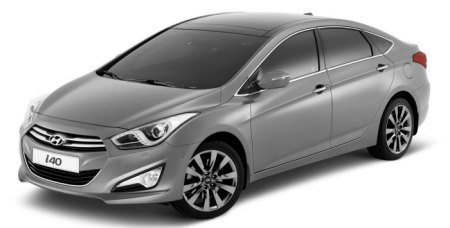
Another day, another
Hyundai. This is the fifth new or refreshed Hyundai I write about this
year. It shows that the Korean giant is the fastest growing car maker
in the world. To feed and further drive the strong demand from all over
the world, Hyundai now follows the route of Toyota and Honda to make
different cars for different markets. The i-series cars are dedicated
to Europe. They are not necessarily produced in Europe – the i10 and
i20 come from India, the i40 is imported straight from Korea, only i30
is assembled in Eastern Europe – but they all get the touch of
Hyundai's European R&D center at Russelsheim, Germany. One day,
perhaps, Russelsheim could be more famous for designing Hyundais than
Opels.
The new i40 might be seen by some as unnecessary. Hyundai has an
existing product serving the same purposes. It is called Sonata. The
Sonata has all the ingredients to satisfy European customers, including
a sharp look, an adequate size and some efficient (direct injection)
small engines. In fact, the current generation Sonata is so far removed
from its American-oriented predecessors that it could be easily sold as
a world car. However, Hyundai does not want to risk its chance of
breaking into the European mid-size family car segment. It is willing
to spend extra money to guarantee a successful migration to higher
social status. That will be crucial to the brand image and the prospect
of the company. If it succeed, it could be seen as a level player to
Ford, Opel, Peugeot and maybe even Volkswagen. If not, it will remain
to be seen as a maker of cheap small cars. Consequently, Russelsheim is
responsible for the styling and engineering of i40.
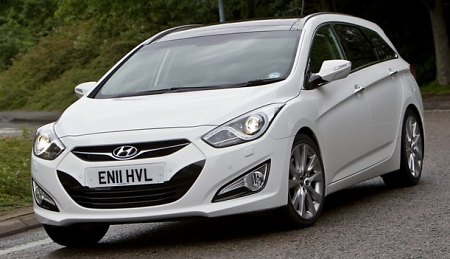
Based on the Sonata platform, of course. The i40 has a similar
proportion – just has a wheelbase chopped by 25 mm and overall length
shortened by 80 mm. This allows the use of the same suspension
comprises of MacPherson struts up front and multi-link with ASD
(amplitude selective dampers) at the rear. The electrical power
steering are carried over, too, but like the suspension it is tuned in
Germany for European taste. The engines come from the Korean parts
pool: 135hp 1.6-liter DVVT direct-injection, 177hp 2.0-liter DVVT
direct injection and 1.7-liter CRDi common-rail turbo diesel with
either 113hp or 136hp. Ditto the choice of 6-speed manual or 6-speed
automatic transmission.
What separates the i40 from its sister car are the packaging and
driving dynamics. We talk about the former first. The German design is
generally regarded as more dynamic yet more elegant than the California
design of Sonata. The new hexagonal fascia and teardrop headlights
merge quite well with the overall design. The lip spoiler and fog lamps
are more polished than the half-hearted items on Sonata. A similar
strong crease line runs at the sides of both cars, but the European car
has an additional convex at the lower part of the doors as well as the
side of rear bumper. This makes the car look slimmer and more
interesting. The chromed window frames of i40 also look significantly
more elegant than the black plastic frames of Sonata. However, the
biggest difference is the tail, at least on the wagon version. While
the tail of Sonata looks dull, the tail of the i40 wagon is
3-dimensionally sculpted to deliver a sense of solidity. A pseudo
diffuser and chroming add to sportiness and elegance respectively.
Overall speaking, this is a brilliant design.
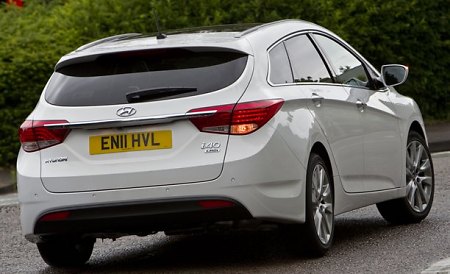
Inside, the dashboard construction is similar to Sonata, but all the
plastic molding, switchgears, decors and even the steering wheel are
new. It all looks a little bit sportier than its sister car. Fit and
finish is good. The dashboard is made properly of soft-touch plastic,
and there are nice-looking faux alloy and piano-black lacquer to lift
the quality feel. The high-definition LCD screen on the center console
is also eye-catching. On the downside, however, the door panels and
grab handles are made of less satisfying hard plastics, while the shiny
switches on dashboard look and feel low rent. European rivals like
Peugeot 508, Volkswagen Passat and Ford Mondeo still feel more
expensive.
The cabin is quite spacious, especially on the wagon. Four big adults
will find it accommodative, and five are possible at a squeeze. Driving
position is not so good, as seat adjustment is not low enough. The
front seats are also hampered by uncomfortable headrests, so
comfort over long journey is doubtful. The wagon offers a remarkably
large luggage space measuring 553 liters with rear seats in place. The
well shaped cargo area has rails for attaching partition and belts to
fix the luggage, very convenient to place large items like bikes. Not
so
good is the rear backrest, which neither folds flat or tumbles forward,
limiting the ability to place larger items.
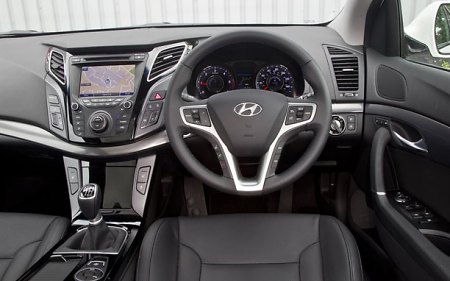
On the move, the i40 is not as good as it looks. Very much like a
Toyota Avensis, its handling and ride are decent without being
outstanding. The chassis tuning is obviously German-biased, which means
it favours straight line stability than agility. It offers decent body
control and grip, but there is not much fun to speak about. The
steering is tuned to be very heavy, discouraging swift driving on
winding roads. Its assistance is artificial and inconsistent, failing
to communicate with the driver. Refinement could be described as superb
if the road is German-smooth. On highway, wind noise and road
intrusions are well filtered from the cabin. However, once it passes an
expansion joint or a sudden bump, you will find its refinement is
skin-deep. In this way, a Mondeo, 508 or Passat are far more polished.
Not just chassis, the engines are not unlike Toyota Avensis. Hyundai
have not yet developed small turbocharged gasoline engines for European
market, so you have to live with the peaky manner of its
naturally-aspirated engines. Even though the 2.0GDi engine produces a
remarkable 177 horsepower, it is not as flexible low down as a 160hp
Volkswagen 1.8TSI engine or a 160hp Ford 1.6 Ecoboost. This makes a big
difference in real world performance. It also hampers engine refinement
somewhat, because you have to rev its engine harder to get up to pace.
The problem is similar to Toyota's 1.6 and 1.8-liter Valvematic engines.
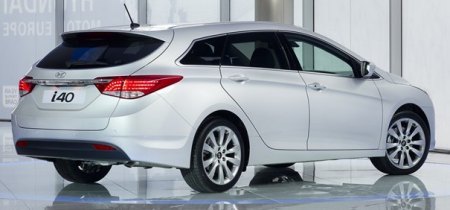
That means the 1.7CRDi engine will be the dominating power in Europe.
Yes, it does offer a more usable torque curve and better fuel economy
than the petrol engines, but itself is not the best small diesel engine
on the market. Moreover, automatic stop-start is strangely omitted on
the more powerful (136hp) version, hampering its fuel economy. The
136hp engine emits 134 grams of CO2 per
kilometer. A Passat 2.0TDI manages 120 g/km yet it offers better
performance from its more powerful engine.
This mean the Hyundai is unlikely to threaten its best European rivals
from their dominating positions, although I believe it will make a
stronger case against Toyota Avensis and the aging Honda Accord thanks
to its superior style and value.
|
Verdict:    |
|